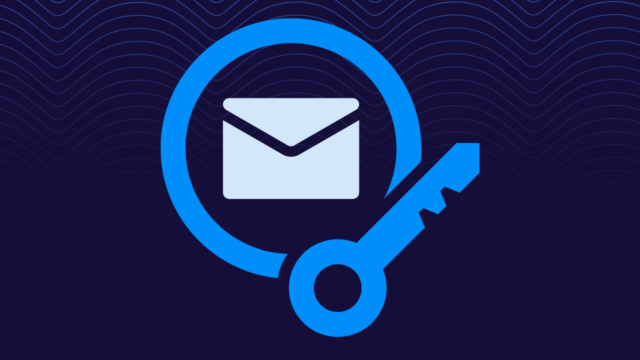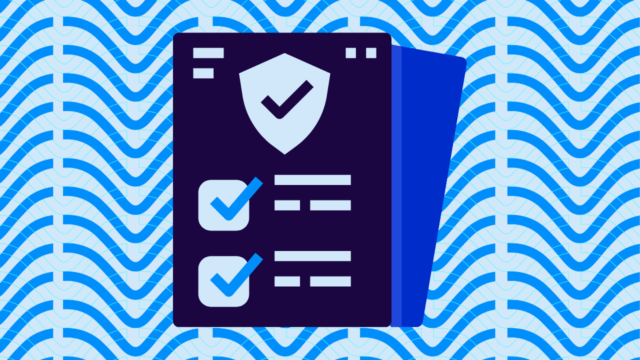Ever open your inbox or spam folder to a bunch of junk mail and wonder how these spammers got your email address in the first place? While there can be multiple explanations, the most likely cause is often an email spammer bot.
Email spammer bots scrape email addresses from the internet to launch spoofing and phishing attacks. This spray-and-pray tactic can catch unaware recipients off guard, especially if cyber criminals try to doop consumers by impersonating a well-known, trusted brand.
That’s where DMARC (Domain-based Message Authentication, Reporting, and Conformance) comes in handy. However, before we get there, let’s talk about email spammer bots and what you can do to prevent your customers’ or employees’ email addresses from being scraped and scammed.
What are email spammer bots?
Email spammer bots (also known as spambots) are automated programs designed to send out mass quantities of unsolicited and often harmful emails. They operate relentlessly, 24/7, flooding inboxes with unwanted messages ranging from annoying to downright malicious.
As you can imagine, spambots are a major headache for individuals and businesses. They clog up email servers, waste time and resources, and can even be used to spread malware and phishing scams.
Here’s how typical email spammer bots operate:
- Scraping email addresses: Spambots use automated scripts to scan websites, social media platforms, and forums for email addresses. These addresses can then be added to the bot’s database and targeted with spam emails.
- Cracking password lists: Spambots can use stolen password lists to gain access to email accounts. These accounts can then be used to send spam emails or to harvest more email addresses.
- Botnets: Botnets are networks of infected computers that a single attacker can control. These botnets can be used to send out massive waves of spam emails.
While this might seem like a minor nuisance, spambots can pose several threats to your business, users, and employees:
- Malware: Spam emails often contain links or attachments that can be used to install malware on your computer. This malware can steal your personal information, track your online activity, or even take control of your computer.
- Phishing scams: Spambots can send phishing emails designed to trick you into revealing personal information, such as your bank account number or social security number.
- Denial-of-service attacks: Botnets can launch denial-of-service attacks, which can overwhelm a website or email server with traffic and make it unavailable to legitimate users.
Best practices to avoid email scraping
While you can’t stop every cyberattack or phishing attempt, you can better protect your business, employees, and customers by adopting a handful of best practices. These tips and policies will make it harder for email spammer bots to scrape your email addresses, protecting you from simple attacks and scams:
1. Implement CAPTCHA
Adding CAPTCHA verification to contact forms and online registration processes can deter automated bots from scraping email addresses. Choose a CAPTCHA solution, such as reCAPTCHA v3, that balances security with user experience.
2. Use JavaScript obfuscation
This technique involves hiding your email addresses within JavaScript code, making them invisible to web scraping bots while remaining accessible to human users. This can be achieved by encoding the email address or using a JavaScript library designed for obfuscation.
3. Hide email addresses with HTML comments
Similar to JavaScript obfuscation, enclosing your email address within HTML comments will render it invisible to bots while still allowing it to be displayed and copied by human users.
4. Leverage email address validation tools
Use tools that validate email addresses in real time to help prevent bots from submitting invalid addresses to your forms. This can significantly reduce the number of spam emails received and protect your resources.
5. Monitor website traffic
Keep a close eye on website traffic and analyze server logs to help identify suspicious activity patterns that might indicate bot activity. Prompt action should be taken upon detecting any anomalies.
6. Educate your employees and customers
Raise awareness about email scraping and phishing scams among your employees and customers. Encourage them to be cautious when sharing their email addresses online and report any suspicious emails they receive.
7. Regularly update security software and plugins
Outdated software and plugins can create vulnerabilities that bots can exploit. Regularly update your website’s software and security plugins to maintain a robust defense against email scraping and other cyber threats.
8. Guard your email address
Think of your email address as personal information. Avoid displaying it publicly on websites, social media, or online forums. If you need to provide an email address for contact purposes, consider alternatives like contact forms that hide the actual address from bots.
9. Use email aliases
Email aliases are a great way to protect your primary email address. They act as a mask, forwarding emails to your main inbox while keeping your real address hidden.
When prevention isn’t enough: Enter DMARC
DMARC is a robust email authentication protocol. It builds on two established email authentication methods, SPF (Sender Policy Framework) and DKIM (DomainKeys Identified Mail), to develop rules and instructions for how email receivers should handle emails claiming to come from your domain.
Imagine sending a letter with a special seal. The recipient knows that if the seal is not authentic or missing, the letter isn’t genuinely from you. DMARC works similarly for your emails.
You know how credit card companies will block suspicious transactions and contact you to protect your available credit and credit score. Well, DMARC works similarly for a company’s sending reputation, as there is a sort of “credit score” for gaining the inbox.
Travis Hazlewood, Head of Deliverability, Ortto
DMARC ensures that the emails sent from your domain are legitimately yours and haven’t been tampered with along the way. If an email fails DMARC checks, it can be quarantined or rejected (based on the policy you set). This prevents spammers from impersonating your brand and keeps your domain’s reputation intact.
While you can’t always prevent your employees’ and customers’ email addresses from being scraped or stolen, you can protect your brand and stop spoofing and phishing scams. Here’s how DMARC makes it happen:
- Authenticating senders: DMARC verifies that the email sender is authorized to send emails from your domain, effectively blocking spoofed addresses.
- Protecting recipients: By preventing unauthorized use of your domain, DMARC shields your clients and contacts from potentially harmful emails that could otherwise appear to come from you.
- Reporting and visibility: DMARC provides feedback on emails sent from your domain. This means you can monitor for unauthorized use and adjust your email security policies accordingly.
- Building trust: A DMARC-protected domain signals to your recipients that you value security and are taking proactive steps to ensure safe communication. This builds trust and enhances your brand’s credibility.
Protect your email communications with DMARC
Email scammer bots can be a real online problem, but you’re not at the whim of bad actors. The first step to locking down your domain and seeing what email scammers might be using it is to get visibility into your senders.
Get free visibility into your email ecosystem with Valimail Monitor and see who’s sending emails on your behalf. With our easy-to-use solution, you can:
- Identify unauthorized senders attempting to use your domain
- Gain instant insights into your email authentication status
- Take the first step towards protecting your brand from phishing and spoofing
And the best part is it’s free with no credit cards or free trials. Take your first step to safeguard against email spammer bots and other digital dangers.


